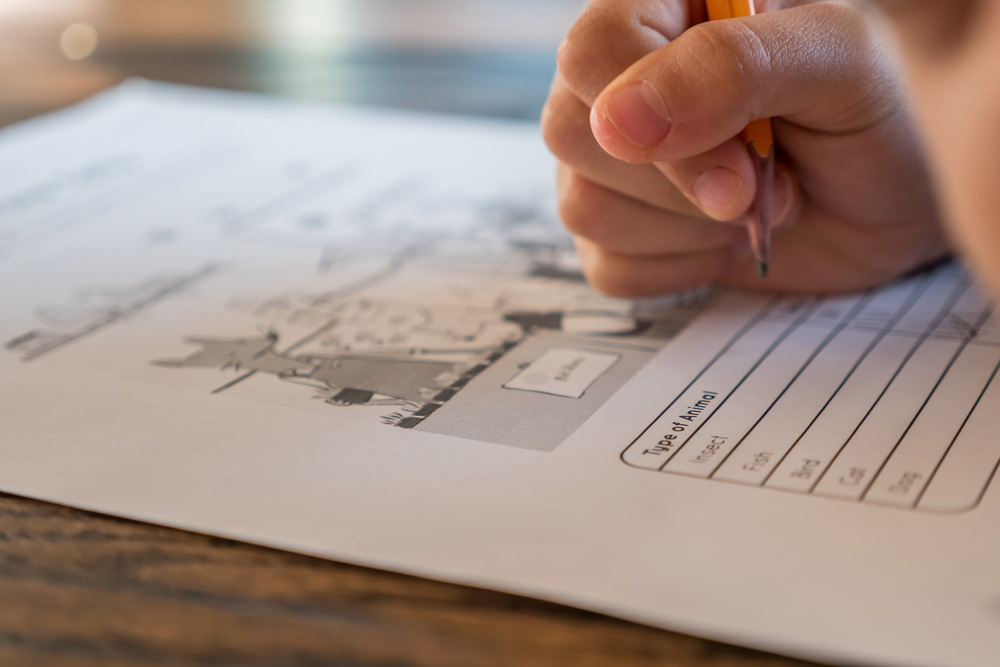What Is Response To Intervention?
Maintaining grade-level proficiency in reading and math is essential to student achievement throughout their educational years and beyond, but unfortunately, 22% of American adults are innumerate (functionally illiterate in math), and 21% are illiterate. These individuals earn less, live shorter lives, and are less healthy than their literate and numerate counterparts. Clearly, early childhood education is an important issue that needs drastic attention.
Thankfully, for at-risk students showing skill deficits, there is an educational evaluation process in place to monitor individual student performance and provide a plan for intensive instruction to remedy deficits. This standardized approach is called Response to Intervention (RTI).

What Is Response To Intervention?
RTI is a standardized approach to identifying and supporting students requiring differentiated instruction to meet educational baselines. It's a Multi-Tiered System of Support (MTSS) that includes research-based instruction; universal screening for at-risk students; frequent progress monitoring; and cooperation between students, parents, and educators.
Unlike other approaches to academic performance evaluations and learning disability identification, RTI focuses more on the outcome of each tier of intervention rather than students' performance compared to grade standards. This means that students are being evaluated more for their ability to learn rather than their specific academic achievements.
In order for RTI to be successful, the following essential components must be present:
- Classroom teachers must perform research-based instruction practices, since inadequate instruction can mis-identify struggling students.
- Student progress must be measured continuously to determine whether the interventions are improving academic deficiencies. Evaluations should be based on multiple data points, not singular, comprehensive evaluations.
- A three-tier model should be adhered to, with interventions increasing in intensity with each new tier.
- Parental involvement is essential to student success, and parents should be informed and supportive of interventions and student progress.
At its core, the function of RTI is to appropriately identify students for special education services and keep as many students as possible in the general education classroom through various assessment procedures and intense interventions.

The Three-Tier RTI Model
A key component of RTI is its three-tier model. This model is designed to screen students for academic skill, evaluate teachers for adequate instruction, and provide individualized instruction, when necessary, to give students the greatest chance for success.
Tier 1: High-Quality Classroom Instruction, Screening, and Group Interventions
In order for any student to be successful, they must be educated using high-quality instructional methods taught by qualified educators. Inadequate instruction can result in the appearance of learning deficits in some students without learning disabilities, so access to high-quality instruction is essential.
In the course of regular education, all students in the school district are screened for basic skills and grade-level progress by classroom teachers. Students identified as struggling learners during the school-wide universal screening process begin receiving specific interventions according to Tier 1 of the RTI model.
In Tier 1, these students receive supplemental instruction from general education teachers while remaining in the general education classroom. This supplemental instruction occurs for a maximum of 8 weeks, although it may be less if they show progress with this level of intervention. If supplemental instruction in Tier 1 doesn't help students to learn at the pace of the general curriculum, they'll move on to Tier 2 intervention.

Tier 2: Targeted Intervention
Students who don't display academic performance progress in response to Tier 1 intervention proceed to Tier 2. Tier 2 supplemental instructional methods are presented in a small group setting, but they may continue to be taught out of the general education curriculum. Students are monitored more frequently during Tier 2 intervention than they were in Tier 1 intervention, with weekly or biweekly monitoring at a minimum. Tier 2 intervention can occur for 30 minutes per day, 2–4 days per week for up to 9 weeks before progressing to Tier 3.
The purpose of Tier 2 is to determine if intervention can help struggling students learn at the same rate as students in the general education classroom. If students don't display adequate progress after 9 weeks of Tier 2 instruction and regular monitoring, they progress to Tier 3 intervention.
Tier 3: Intensive Intervention and Comprehensive Evaluation
Tier 3 intervention is the final step in the RTI process. As such, it's the most intense and individualized level of intervention. Students in Tier 3 intervention receive direct instruction based on their specific academic deficiencies for 30 minutes per day for up to 4 days per week for 9–12 weeks. This instruction may be from a general education teacher, or it may be from a special education teacher depending on the school district. If students continue to be at risk for learning deficits after Tier 3 intervention, they'll receive a formal evaluation for learning disabilities and special education programs.

How Is Progress Monitored?
Effective implementation of RTI requires continual progress monitoring at each level of the multi-tier system. While progress monitoring is generally not a comprehensive, formal process, individual evaluation is necessary to determine student learning and progress towards academic goals.
Typically, teachers evaluate baseline skills using curriculum-based screening measures. Each student's skills are compared to the standard student baseline—based on their results, they may be identified for RTI. Once they begin RTI, then educators measure progress against the standard baseline either weekly or biweekly to determine whether they're achieving goals or requiring additional intervention.
Criticism of RTI
There are proponents and critics of RTI. Proponents believe RTI provides a more standardized method of identifying students requiring special education compared to past systems, which were more likely to mislabel minority students as learning disabled. Those in support of RTI indicate that it reduces unnecessary special education referrals, which saves special educator time and resources for students with learning disabilities. Additionally, RTI creates a more collaborative teaching environment between general and special educators, which can benefit some students.
However, critics of RTI complain that the model only identifies individuals who learn slowly instead of those with diagnosable learning disabilities. They see RTI as a valuable model of prevention for students who may struggle in a general education classroom, but don't believe it's a viable way of diagnosing disabilities. The research of RTI is ongoing to determine whether it's a viable method for determining learning disabilities.

RTI and Special Education
In many states, RTI is the primary way students are referred to special education programs. That's because the federal government mandates which students are eligible for special education, and the RTI process complies with the government's regulations regarding this process. In fact, in some districts, Tier 3 of RTI is performed in a special education setting instead of in the general classroom.
However, not all states follow the RTI process, and even those that do cannot require it before referring a child for a special education evaluation. Any parent can request a special education evaluation for their child if they're concerned about learning deficits. Some children that don't qualify for special education based on the RTI criteria may still receive an Individualized Education Plan, or IEP, to help them achieve academic goals based on their learning challenges.
Benefits of RTI
RTI has many benefits compared to the other popular model of student assessment, the ability-achievement discrepancy model. This model uses IQ testing and student grades to identify students requiring individual intervention, which means that students are not identified for support until they have already fallen behind.
The RTI model is a more preventative approach that can help to identify at-risk students before they fall behind and receive poor grades. Because RTI includes three unique tiers, it can evaluate specific levels of instruction and methods to help struggling students succeed on an individualized basis. Additionally, RTI reduces the social impact of slow learning by allowing struggling students to continue to learn with their peers as long as possible.
Improve Targeted Areas Needing Support Through Voyager Sopris Learning Solutions
When students require specialized support in math or literacy, what curriculum should you turn to? At Voyager Sopris Learning, we've crafted comprehensive support programs in math, reading, and writing for every grade level. Our programs are research based, effective, and suitable for both in-classroom and remote learners. Contact us to learn more.

